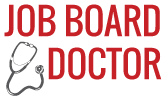Innovation around the edges: LinkedIn, Bright, and the evolution of job boards
 Big change is so sudden, which is why I often talk about the evolution of job boards. Remember how LinkedIn came out of nowhere and revolutionized the recruiting industry? Oh right – they started in 2004. Well, how about Indeed and the rush to PPC? Oops – they launched in 2005.
Big change is so sudden, which is why I often talk about the evolution of job boards. Remember how LinkedIn came out of nowhere and revolutionized the recruiting industry? Oh right – they started in 2004. Well, how about Indeed and the rush to PPC? Oops – they launched in 2005.
Maybe big change isn’t that sudden after all.
Maybe disruption is overrated. Maybe innovation happens around the edges, and over time.
I’ve been thinking about this because of the recent purchase of Bright.com by LinkedIn. Matt Charney wrote an excellent analysis of the purchase – I suggest you take a look. I agree with him that what LinkedIn was buying was a) a bunch of big data talent; and b) matching technology.
Is this purchase going to revolutionize the job board industry? Probably not. But it will move LinkedIn a bit further down the evolution of job boards path. The company could’ve just as easily bought Talent Bin, Remarkable Hire, Gild, or any of a number of other innovative online recruiting companies. The fact that it chose Bright says more about its own internal weaknesses, and less about Bright itself or its competitors.
So why does innovation and change happened relatively slowly in the recruiting industry? For example, think back to the dawn of online recruiting – the emergence of job boards in the mid-90s. The innovation came from the fact that the listings were now online, and thus untethered from the physical limitations of a sheet of paper and the geographical limitations of a newspaper’s distribution. Since then, there have been a number of innovations, including job alerts, some primitive matching, and some primitive social interaction. Each of these innovations has been heralded as “revolutionary”.
Were they? Not really, but this innovation around the edge did move the process forward. What slows innovation down is adoption (or lack thereof) by employers and candidates. Let’s face it – people don’t like change.
Let’s flash forward to now. Our current “revolutionary” changes include social recruiting, big data, people aggregation, assessment, and the ability to do this all on a 4 inch screen that fits in our pocket. Are any of these truly revolutionary and disruptive? Or are they simply logical outgrowths of existing practices? In other words, part of the evolution of job boards? Of these, the only one that I see has the potential to disrupt the industry is big data. Will it? Probably not.
So – despite the pruient interest in following LinkedIn’s moves and counter moves (much as we used to follow Monster), I’m not sure it does the average job board or online recruiting company a lot of good. I think it’s more useful to focus on what works and doesn’t work for employers and candidates in the online recruiting process – and then tackle that.
But then again, I could be wrong.
[Want to get Job Board Doctor posts via email? Subscribe here.]. [Check out the JobBoardGeek podcast archive!]Comments (2)
Comments are closed.

Looks like I was scooped by Monster! : Monster to acquire social recruiting tools TalentBin, Gozaik (http://aimgroup.com/2014/02/24/monster-to-acquire-social-recruiting-tools-talentbin-gozaik/?utm_source=feedly&utm_reader=feedly&utm_medium=rss&utm_campaign=monster-to-acquire-social-recruiting-tools-talentbin-gozaik)
[…] Big change is so sudden. Remember how LinkedIn came out of nowhere and revolutionized the recruiting industry? Oh right – they started in 2004. Well, how about Indeed and the rush to PPC? Oops – they launched in 2005. Maybe big change isn’t that sudden after all. Maybe disruption is overrated. Maybe innovation happens around the edges, and over time. [read article] […]